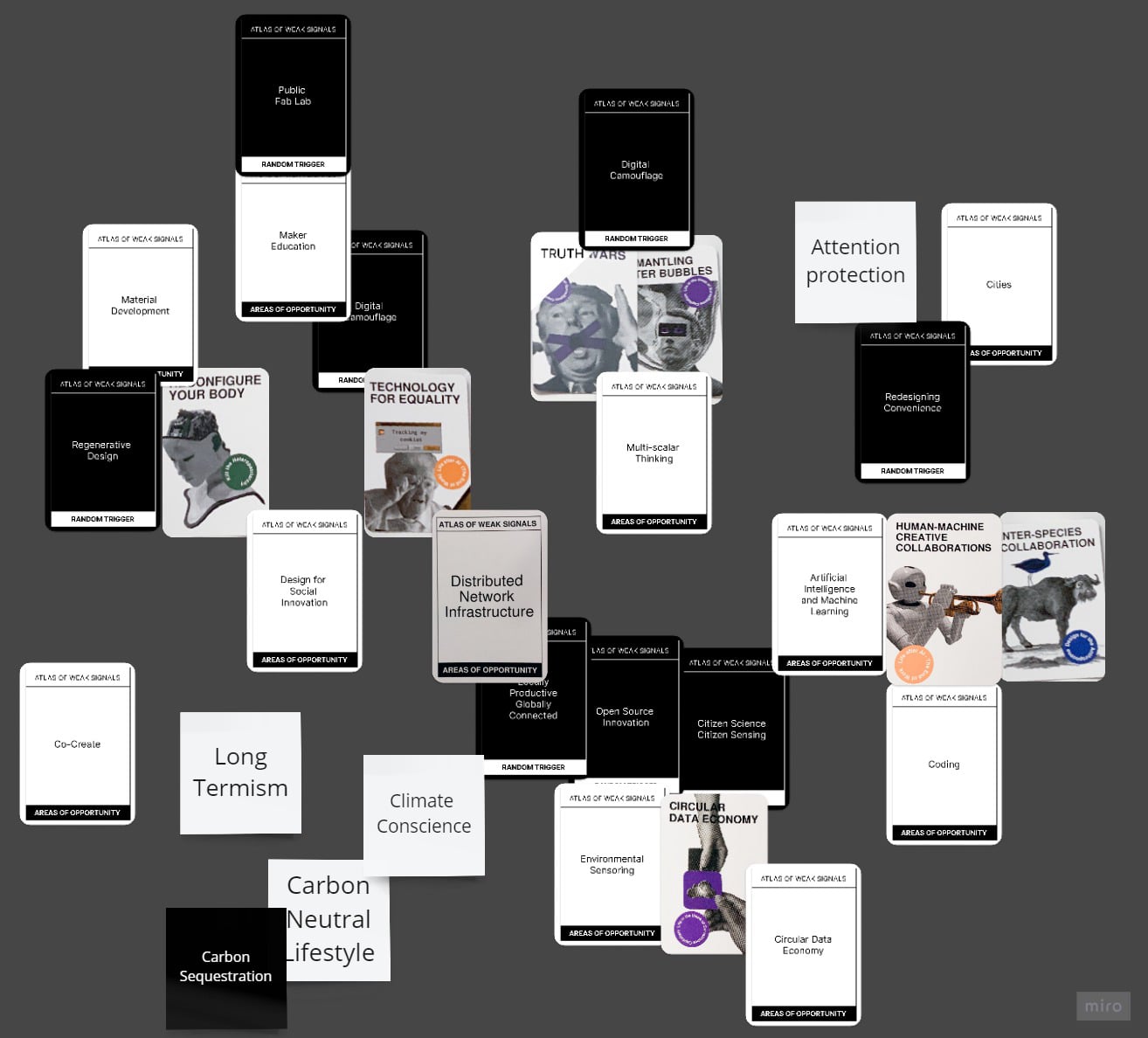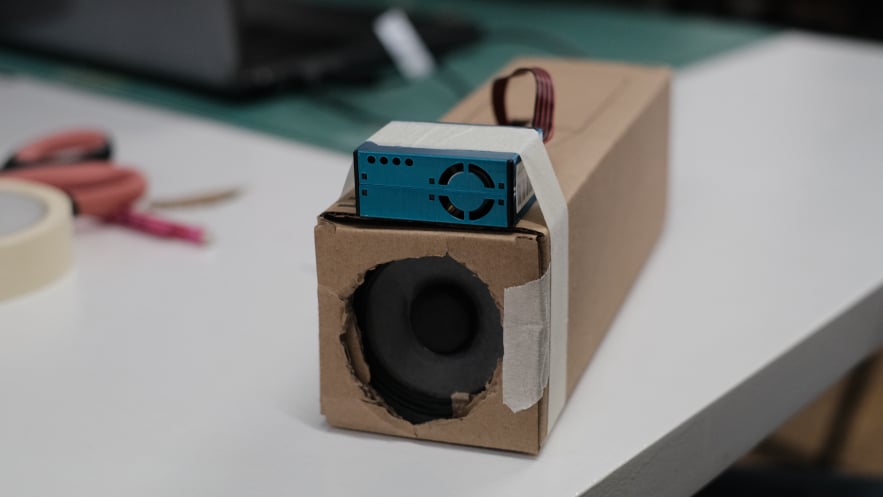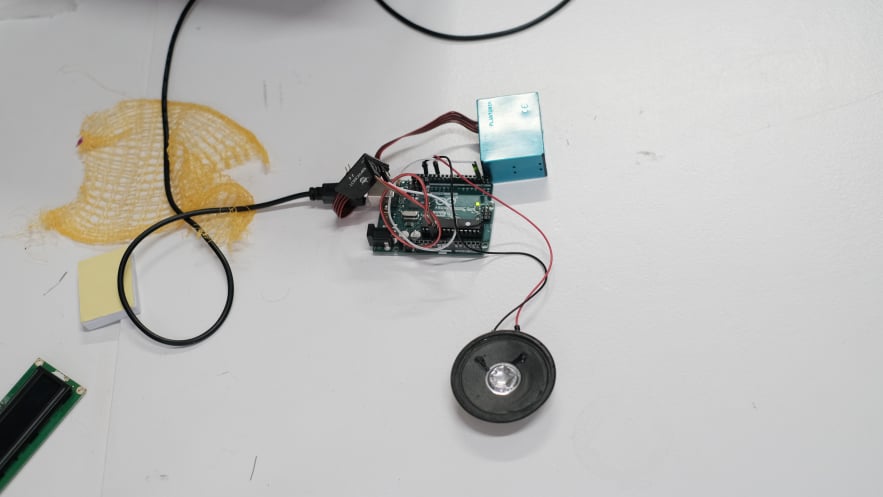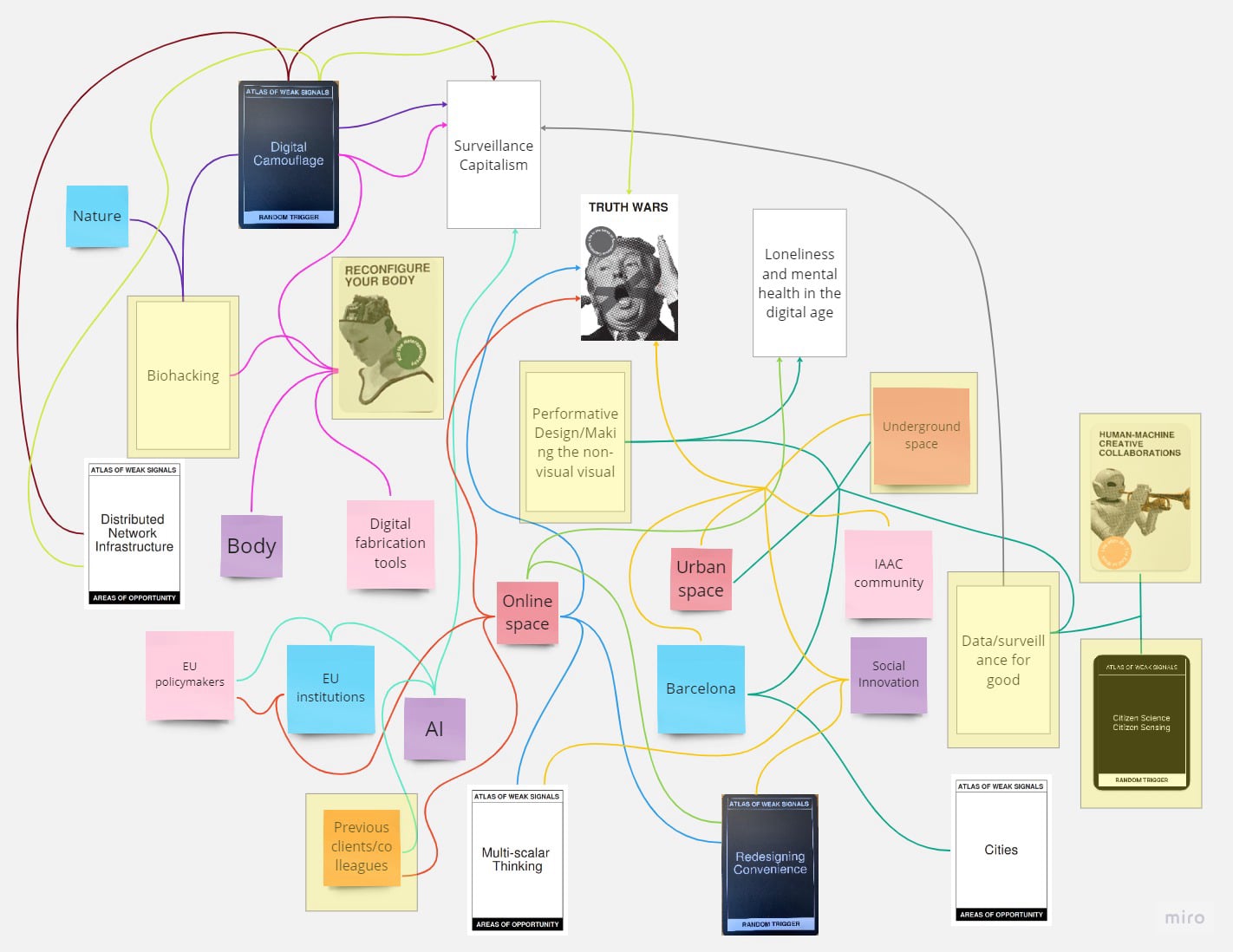
Ideation
Team: Nicolo, Marius, Ana, Anthuanet and me.
We put our personal design spaces in common to form a shared design space. This helped us understand where we wanted to focus our intervention. We realised that all of us were interested in human-machine creative collaborations and how technology & data could help "make the non-visual visual", through different types of sensors, for example. We then discussed the possible intervention spaces around us in Barcelona. We chose the underground metro network as it is a large unused urban space, which could be used for more than just transit. Inspired by a recent study on bad air quality in underground networks, we decided to make air quality in underground networks tangible, as most metro users are not aware of the quality of the air that they breathe while underground. This is especially relevant as governments are encouraging us to increase our use of public transport to fight climate change – but is that good for human health? Being interested in performative interventions, we decided to use sound as a way to translate the level of air quality in Barcelona's metro stations.


